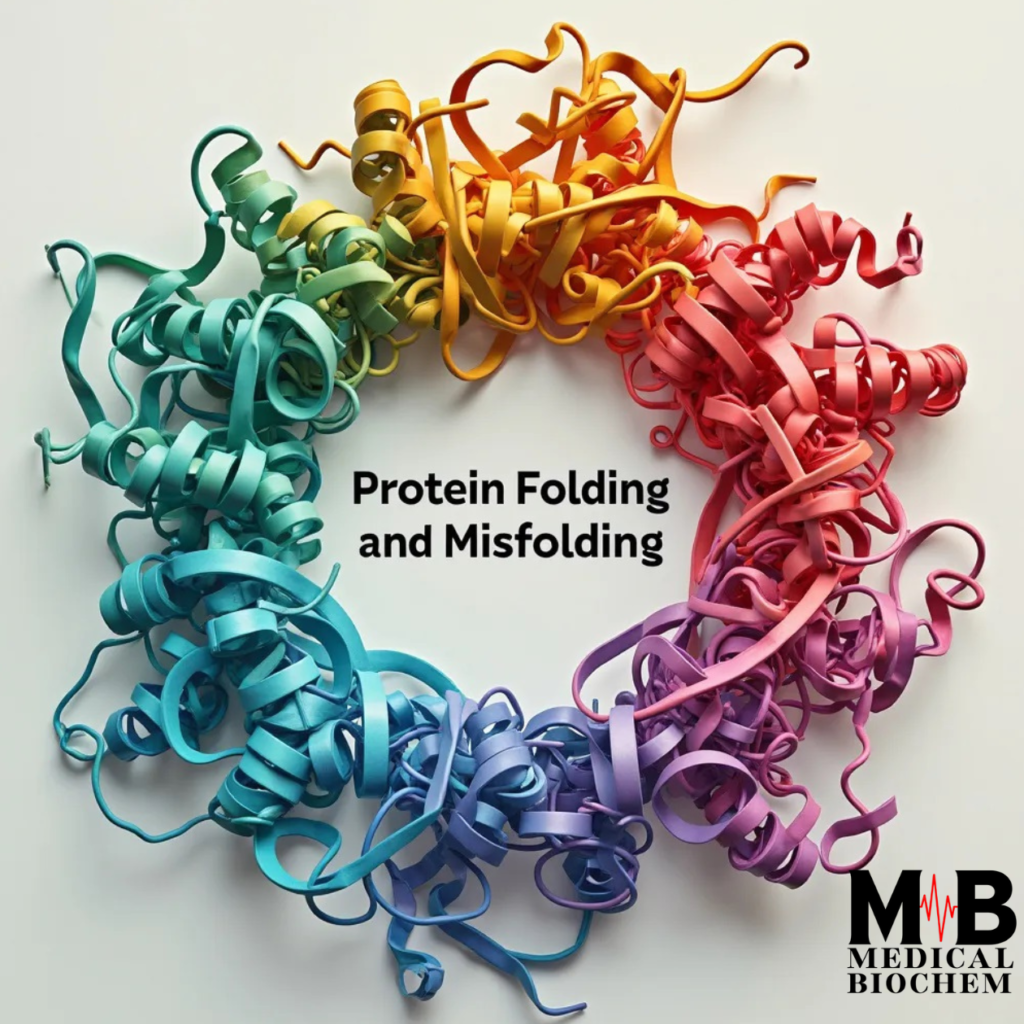Enzyme Kinetics: Understanding the Foundations of Enzymatic Reactions
The study of enzyme-catalyzed reaction velocities falls under the domain of enzyme kinetics in biochemistry.Enzyme kinetics offers explanations regarding the modes of enzyme functioning, regulation, and substrate binding. This knowledge is pivotal not only in biochemistry but also in medicine, biotechnology, and environmental sciences.
This article will give a detailed analysis of enzyme kinetics. It will cover important themes like Km, Vmax, kcat, Michaelis-Menten kinetics, and enzyme kinetics graphs. We will discuss the role of enzyme kinetics in different fields. This includes drug metabolism, environmental bioremediation, and disease treatment.
What is Enzyme Kinetics?
The study of enzyme kinetics focuses on the rates of reactions catalyzed by enzymes. The role of enzymes as biological catalysts is to speed up biochemical reactions by interacting with substrates, providing a deeper understanding of their behavior.
To understand this, it is essential to understand the relationship between an enzyme and its substrate, how enzyme activity can be quantified, and the effects of inhibitors or activators.
Enzymes and Kinetics: How They Work
Enzymes lower the activation energy required for a reaction, thus allowing it to proceed faster. The kinetics of enzyme reactions depend on several factors, including the concentration of substrate, enzyme, temperature, and pH.
The enzyme-substrate complex forms the cornerstone of enzyme’s kinetics, and its formation is an essential step in most biochemical reactions. Studying enzyme’s kinetics often involves measuring how different concentrations of substrates affect the rate of enzyme activity.
Michaelis-Menten Enzyme Kinetics
Michaelis-Menten kinetics is a model that describes how the reaction velocity changes concerning substrate concentration. Named after biochemists Leonor Michaelis and Maud Menten, this model forms the foundation of our understanding of enzyme behavior.
Michaelis-Menten Equation
The Michaelis-Menten equation is used for enzyme kinetic reactions.
v=Vmax[S]Km+[S]v = \frac{{V_{\max} [S]}}{{K_m + [S]}}v=Km+[S]Vmax[S]
In this equation:
- v represents the reaction velocity (rate of product formation).
- The maximum velocity (Vmax) is reached when all enzyme sites are occupied by substrate.
- Km is the Michaelis constant, representing the substrate concentration at which the reaction rate is half of Vmax.
- [S] is the substrate concentration.
What Does Km Mean in Enzyme Kinetics?
Km is a critical parameter in enzyme’s kinetics. It gives insight into the affinity of an enzyme for its substrate. A lower Km value indicates high affinity, meaning the enzyme can achieve significant reaction rates even at low substrate concentrations. Conversely, a higher Km suggests lower affinity.
Knowing the Km of an enzyme for a drug in drug metabolism assists in predicting the drug’s metabolic clearance. This forms part of the kinetics of drug-metabolizing enzymes, which is a significant aspect of pharmacokinetics.
Understanding Vmax in Enzyme Kinetics
When an enzyme is fully substrate-bound, it reaches its maximum reaction capacity, symbolized as Vmax. The maximum reaction velocity is crucial for interpreting an enzyme’s catalytic potential, and it is subject to modification based on the overall enzyme concentration in the reaction.
In their graphs, Vmax is seen as the asymptote to which the reaction velocity approaches as substrate concentration increases.
Exploring kcat and Its Significance
The catalytic constant, kcat, is another crucial parameter in enzyme’s kinetics. It is defined as the number of substrate molecules converted into product by an enzyme per unit time when the enzyme is fully saturated. kcat is often referred to as the “turnover number.”
The ratio of kcat to Km (kcat/Km) is an important measure of an enzyme’s efficiency. It combines the rate of catalysis and the affinity of the enzyme for its substrate, providing a comprehensive measure of enzyme performance.
Enzyme Reaction Kinetics: Visual Representation
It is often visualized using a Michaelis-Menten plot, which graphs the reaction velocity (v) against substrate concentration ([S]). The shape of this plot is hyperbolic for most enzymes, reflecting how velocity increases with substrate concentration and eventually plateaus as enzymes become saturated.
In some cases, a Lineweaver-Burk plot (double reciprocal plot) is used to determine Km and Vmax more accurately by plotting 1/v against 1/[S].
Inhibitors in Enzyme Kinetics: Understanding Ki
Enzyme kinetics also involves studying how enzyme activity can be modulated by inhibitors. Inhibitors are molecules that reduce enzyme activity, either by competing with the substrate for the active site or by binding to other parts of the enzyme.
What is Ki in Enzyme Kinetics?
Ki is the inhibition constant, a measure of an inhibitor’s potency. It represents the concentration of the inhibitor required to reduce the enzyme activity by half. Lower Ki values indicate stronger inhibitors.
The inhibition of proteases in disease is a notable application of enzyme inhibition. Proteases break down proteins as enzymes. Their inhibition is crucial for managing diseases like HIV/AIDS and cancer.
Allosteric Regulation of Metabolic Enzymes
Not all enzymes follow the simple Michaelis-Menten model. Several enzymes are governed allosterically, implying that their action can be influenced by molecules attaching to sites distinct from the active site. This binding changes the enzyme’s conformation and alters its activity.
Allosteric regulation of metabolic enzymes is crucial in maintaining metabolic balance. These enzymes typically display a sigmoidal (S-shaped) kinetic curve. This curve differs from the hyperbolic curve, as the enzymes transition between active and inactive forms.
Enzyme Kinetics in Environmental Bioremediation
Enzyme kinetics in environmental bioremediation plays a vital role in using enzymes to detoxify pollutants. Understanding how enzymes degrade contaminants helps improve strategies for cleaning up polluted environments. This field leverages enzymes that catalyze the breakdown of toxins, using kinetics to optimize reaction conditions for maximal pollutant degradation.
Study of Enzyme-Substrate Complex Dynamics
The study of enzyme-substrate complex dynamics provides deeper insight into how enzymes catalyze reactions at a molecular level. Investigating how enzymes bind to substrates and release products can help in designing drugs and optimizing industrial enzymes for better efficiency.
The enzyme-substrate complex formation is typically a rate-limiting step in enzyme reactions. Therefore, understanding these dynamics is key for both biotechnological applications and pharmaceutical development.
Enzyme Kinetics Equations: Key Formulas to Remember
- Michaelis-Menten Equation: v=Vmax[S]Km+[S]v = \frac{V_{\max} [S]}{K_m + [S]}v=Km+[S]Vmax[S]
- Catalytic Efficiency: kcat/Kmk_{\text{cat}}/K_mkcat/Km
- Lineweaver-Burk Plot: 1v=KmVmax⋅1[S]+1Vmax\frac{1}{v} = \frac{K_m}{V_{\max}} \cdot \frac{1}{[S]} + \frac{1}{V_{\max}}v1=VmaxKm⋅[S]1+Vmax1
These equations form the backbone of enzyme’s kinetics, providing the mathematical framework needed to understand and predict enzyme behavior.
Applications of Enzyme Kinetics
1. Drug Development and Pharmacokinetics
Enzyme kinetics is instrumental in drug discovery and development. The study of drug metabolism enzyme kinetics helps researchers understand how quickly drugs are metabolized. This knowledge enables them to optimize dosing for maximum therapeutic benefit. It also helps minimize side effects by eliminating drugs from the body at an appropriate rate.
2. Disease Treatment Through Enzyme Inhibition
The inhibition of proteases plays a crucial role in managing various diseases. For instance, protease inhibitors are a class of antiviral drugs used to treat HIV/AIDS by preventing the virus from replicating. Understanding enzyme kinetics helps in the design of effective inhibitors.
3. Industrial Enzyme Use and Optimization
The industrial application of enzymes is widespread, encompassing food processing, biofuel production, and detergent manufacturing. Enzyme kinetic helps in optimizing these processes, allowing industries to determine optimal conditions for enzyme use, such as temperature, pH, and substrate concentration.
4. Environmental Applications
As mentioned earlier, enzyme’s kinetics is vital in environmental bioremediation. By understanding the kinetic properties of enzymes involved in degrading pollutants, scientists can develop effective methods for environmental cleanup.
Enzyme Kinetics in Exam Context: MCAT Focus
Understanding enzyme kinetics is also crucial for students preparing for standardized exams like the MCAT. Questions about enzyme’s kinetics often involve interpreting graphs, calculating Km and Vmax, and understanding the effects of inhibitors on enzyme activity.
Tips for Enzyme Kinetics on the MCAT
- Familiarize yourself with the Michaelis-Menten and Lineweaver-Burk plots.
- Understand how competitive and non-competitive inhibitors affect Vmax and Km.
- Practice calculations involving Km, Vmax, and kcat.
Conclusion
Enzyme kinetics is a fascinating field that provides deep insights into how enzymes function, and how their activity can be regulated or inhibited. Understanding the crucial aspects, including Km, Vmax, and kcat, and Michaelis-Menten kinetics, enables us to gain essential knowledge applicable in medicine, biotechnology, and environmental sciences. From drug development to industrial processes and bioremediation, the applications of enzyme kinetics are extensive and impactful.
Understanding enzyme’s kinetics can help you decode the complexities of biochemical reactions and their real-world applications. If you’re curious about enzymes and want to dive deeper, keep exploring, stay inquisitive, and leverage this knowledge in your studies or professional work.
Ready to learn more about enzyme behavior and its applications? Bookmark this guide for your studies or share it with others who want to explore the world of enzyme kinetics!


